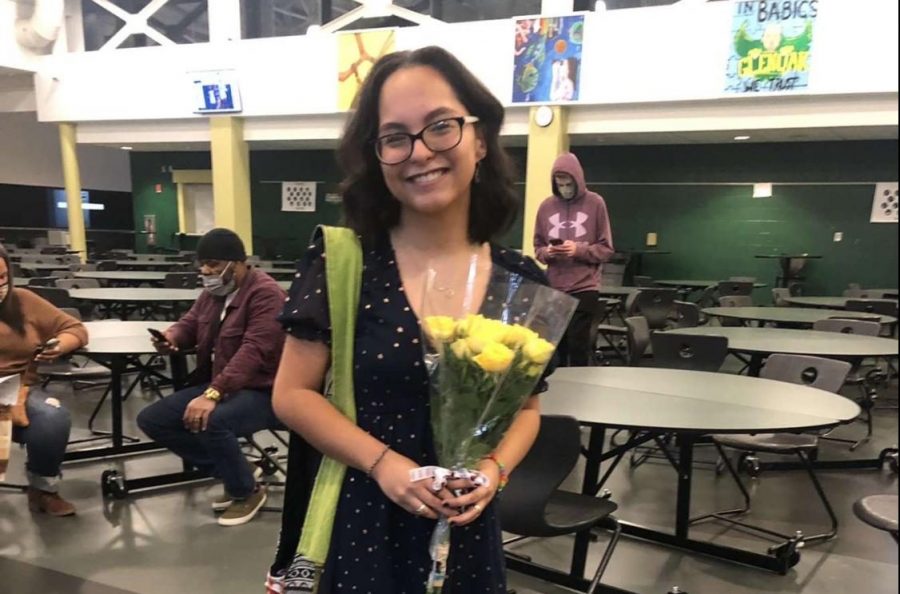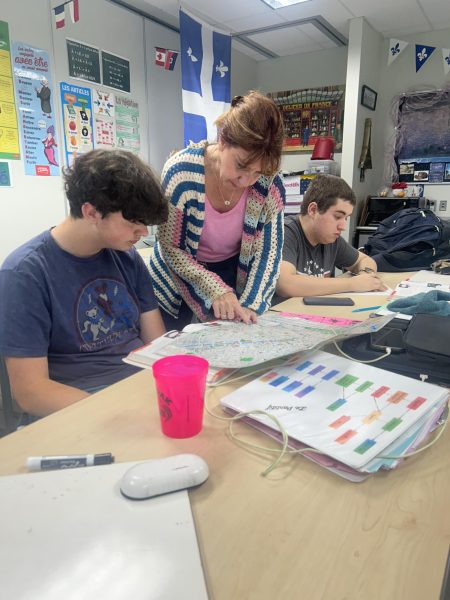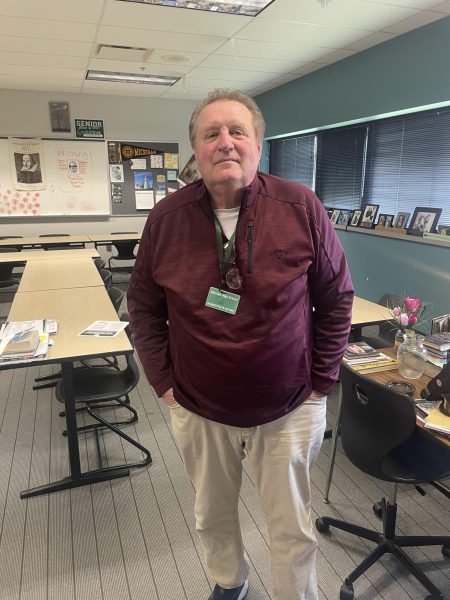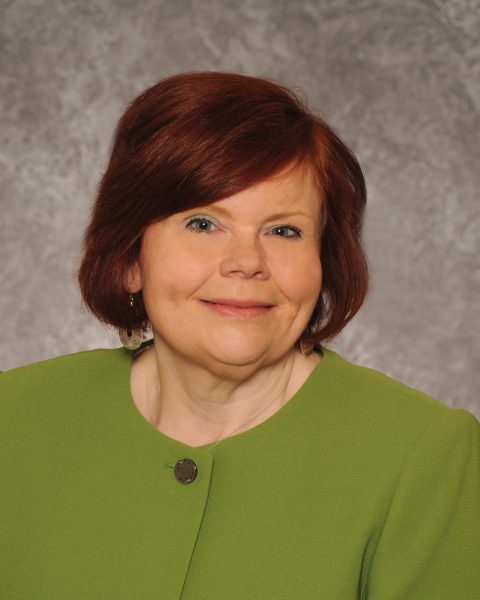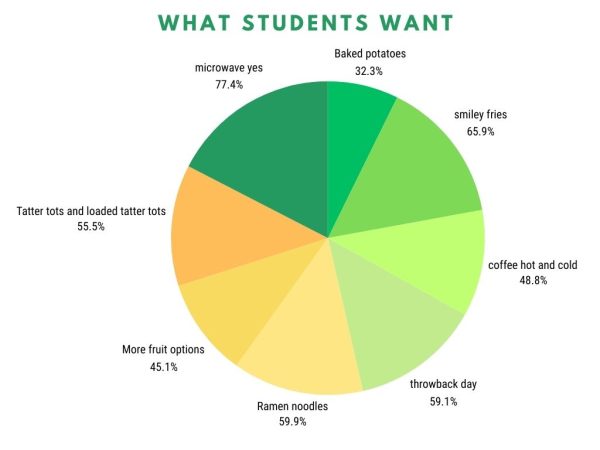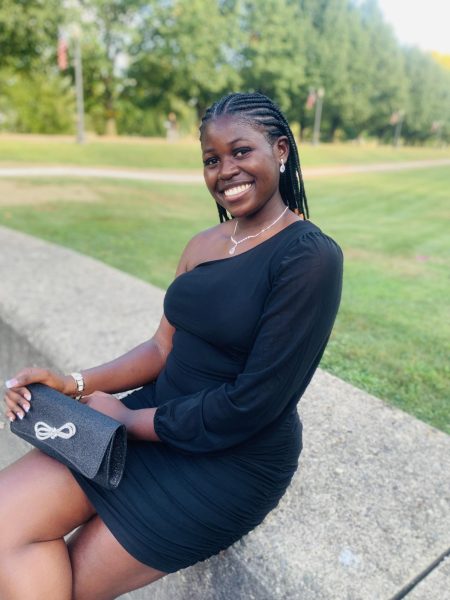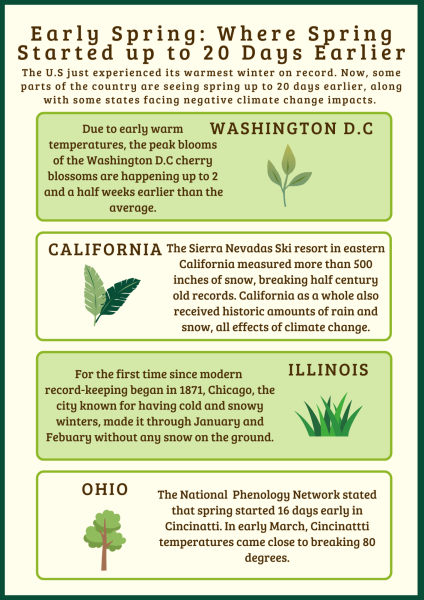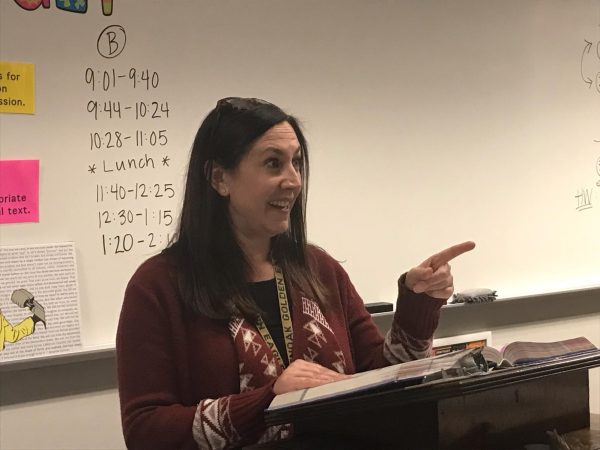Bilingual students of GlenOak
Eagle Photo courtesy of Lizbeth Cisneros
Image of Lizbeth Cisneros holding flowers at a community event. Lizbeth learned both Spanish and English at the same time .
Growing up is challenging. It is even harder when you have to go to school and worry about having to reread the same question over and over again because you can’t understand it.
Having to pretend you do not notice the dirty looks you get in public when you are simply talking to your mom. Not cutting your hair because you don’t want kids to compare you to Dora anymore.
Experiences like these are often the ones that slip people’s minds.
About 70 percent of public school students in Ohio are non-hispanic white people. This lack of diversity in Ohio public schools makes it even more important to recognize the struggles of students of different ethnicities, particularly those who speak English as a second language.
Sophomore Giana Nakoul speaks fluent English and Arabic. She thinks one of the most difficult things that comes with being bilingual is people’s judgements. Nakoul says she wishes people were more open minded and would “learn to accept other cultures and languages”.
Another difficult aspect of being bilingual according to sophomore Lizbeth Cisneros is mixing up words from both languages.
“Sometimes I can only remember the word in Spanish but can’t think of it in English and vice versa,” Cisneros said.
This is because she learned Spanish and English at once, growing up talking both fluently as a child. While this may seem like a lesser issue, Cisneros says it can be really upsetting when answering questions on important tests. However, through all of this, there are definitely more positives to being bilingual.
“Being able to speak two languages is the way I connect to my family. A majority of them don’t speak English, so it is very important to me that I know Spanish,” Cisneros said.
Being able to speak two languages is the way I connect to my family. A majority of them don’t speak English, so it is very important to me that I know Spanish.
— Lizbeth Cisneros
At home her parents speak almost exclusively Spanish, so learning it as a child was crucial to her connection with her family and her culture. She says she is extremely thankful for the extra work she put in when she was younger.
Along with language, food brings people together as well.
“We also eat a lot of Middle Eastern food which other people may find strange and, new,” Nakoul said.
This other aspect of Nakoul’s culture is connecting her to her family in a different way.
The daily battles bilingual students face are sometimes unrecognized. Their daily lives and struggles may look completely different than those of others. Cisneros and Nakoul both agree, people can be cruel about concepts they cannot relate to.
Your donation will support the student journalists of GlenOak High School. Your contribution will allow us to purchase equipment and cover our annual website hosting costs.

